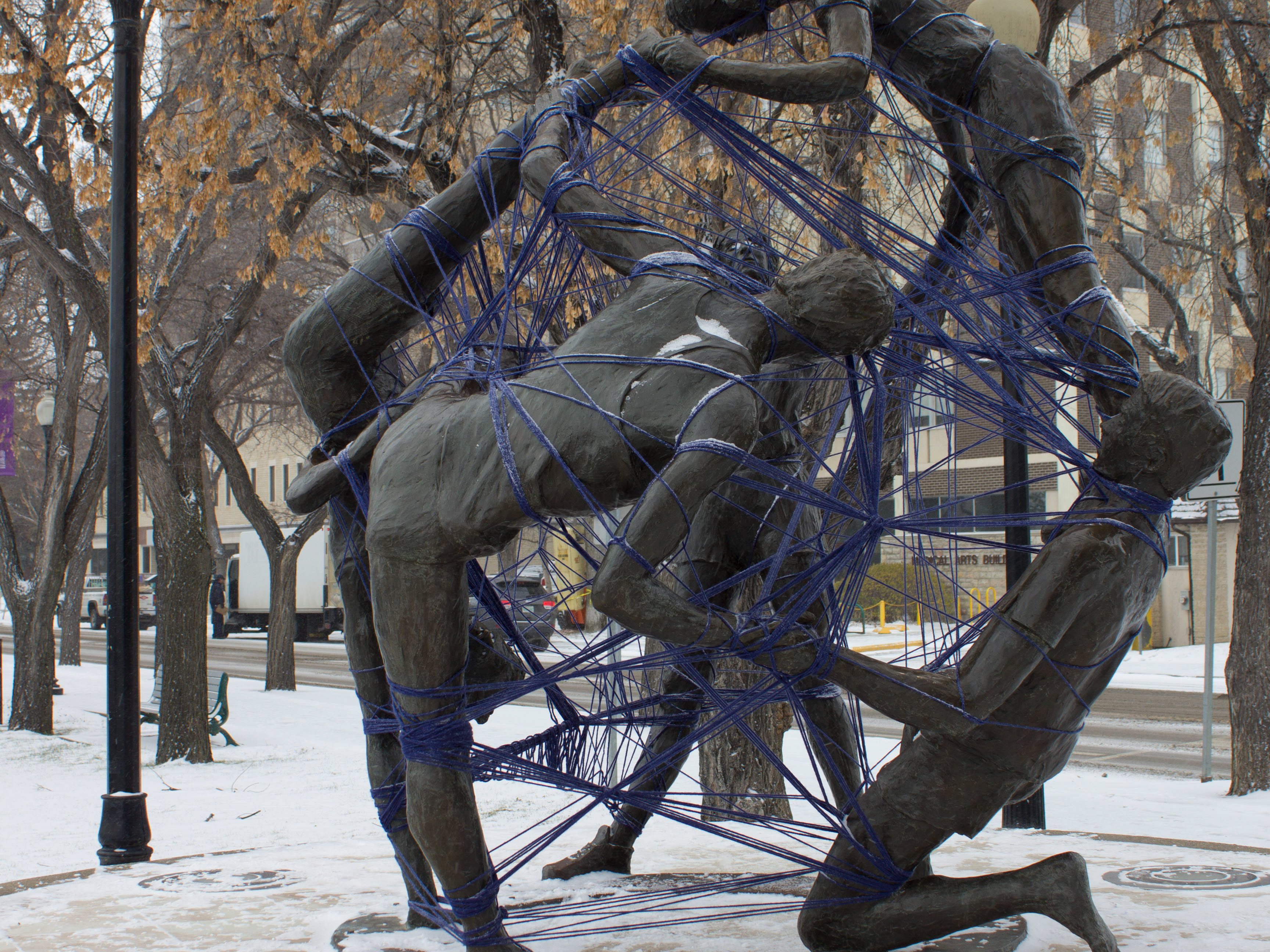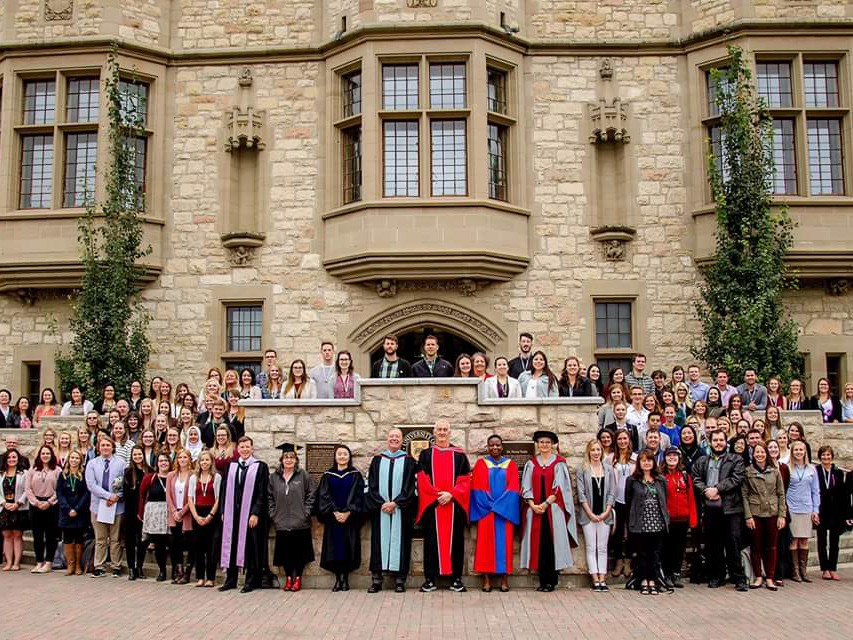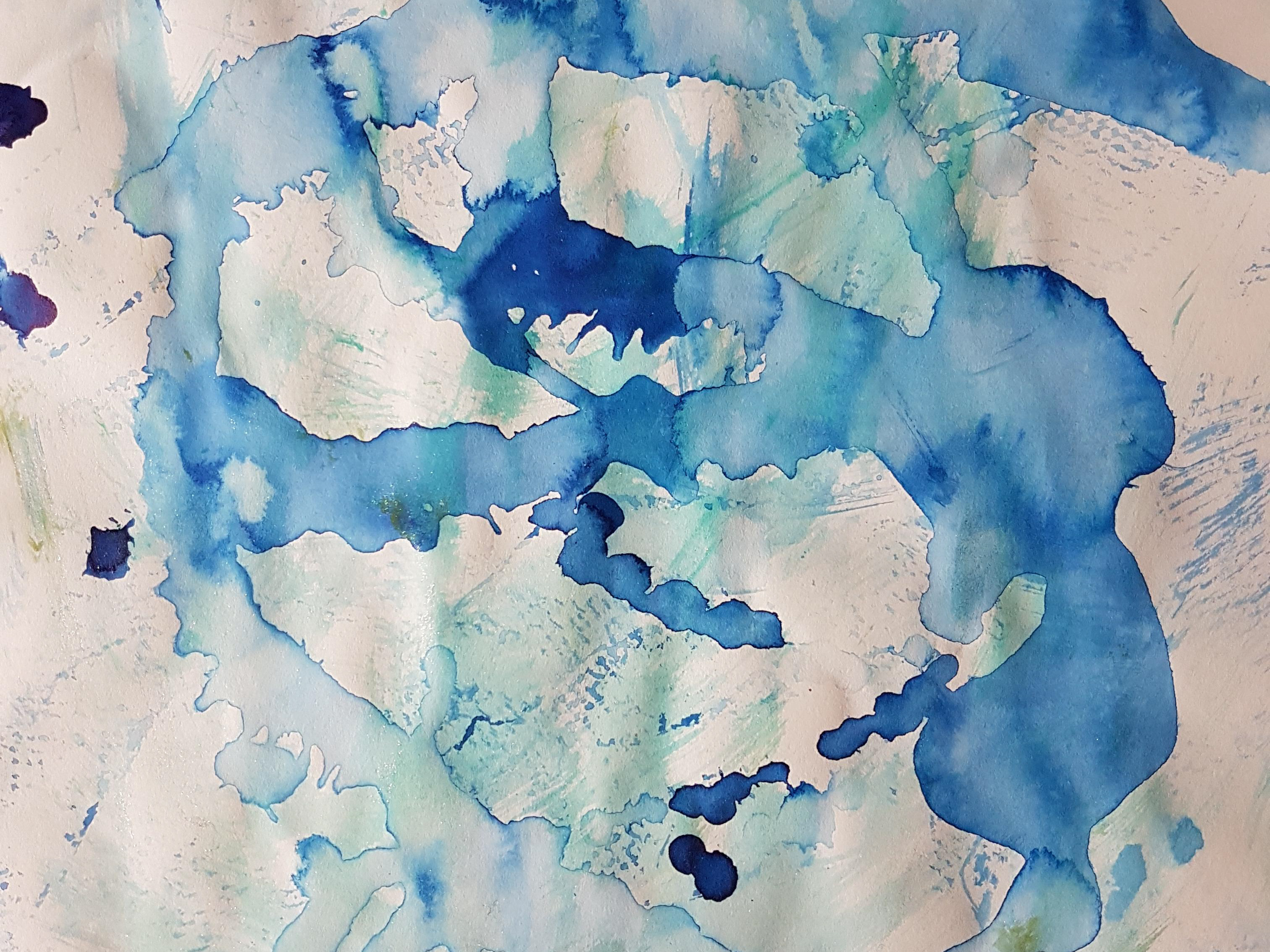This page contains examples of some of the readings and reflections that I have done (on essays, articles, or chapters) while being in the College of Education.
Smith, G. A. (2002). Place-based education. Phi Delta Kappan, 83(8), 584-594. Retrieved from http://cyber.usask.ca/login?url=https://search-proquest-com.cyber.usask.ca/docview/218476286?accountid=14739
Place-based education is a style of teaching that engages students in learning by bridging the gap between a child’s life in and out of school. Place-based learning can engage students in their community and help them learn better about their environment. Rather than teaching students about a specific environment while they sit in a desk place-based learning provides them with the opportunity to get up, get moving, and explore that unique place in person. This makes it easier for students to remember what they are being taught and to gain a better understanding of the material. If we as teachers can tie a memory to a particular lesson a student is much more likely to remember that lesson, place-based learning allows us to easily do this because the student can then think about the physical location that they were just in.
School settings are not designed well for children to deeply learn from. In a classroom a child’s job no matter how hard we try to engage them is to sit and absorb as much information as possible so that they can pass an exam. This is not representational of the real world and doesn’t help students gain an understanding about what to expect outside of a classroom setting. When children grow up they don’t sit at home and learn from a desk, they explore and interact with their surroundings as much as possible. Children learn from their own social reality so when we take them out of their community and put them in a classroom they lose that part of their learning and a disconnect forms. There are countless examples of classrooms and programs that have been designed specifically in a place-based learning style that are successful and well founded.
Place-based learning can include studies of nature and the environment, community and surrounding areas of the school. There is an endless amount of ways that place-based learning could be incorporated into the current curriculum model.
Gardner Seawright (2014) Settler Traditions of Place: Making Explicit the
Epistemological Legacy of White Supremacy and Settler Colonialism for Place-Based Education,
Educational Studies, 50:6, 554-572, DOI: 10.1080/00131946.2014.965938
Epistemological Legacy of White Supremacy and Settler Colonialism for Place-Based Education,
Educational Studies, 50:6, 554-572, DOI: 10.1080/00131946.2014.965938
The topic of this paper is to explore the epistemological traditions that have been shared across generations of North American settler colonialists. Place-based learning is on the rise and because of that thought needs to be given to epistemological traditions that shape individual understandings of the social world. Due to the epistemology of settler society there is a racialized, anthropocentric, and capitalist understanding of places because relationships to places are built through particular conceptions of nature, private property, and person-hood. Place-based learning offers an epistemic resistance to domination but it also needs to offer more of an understanding of settler traditions of place. Creating a relationship between the social and ecological is what western schools are doing by including place-based education. The western concept of place is "narrowly utilitarian". Injustice is epistemically proliferated across the social systems and must begin with a structural account of domination. Which is hwy we need a theory of injustice more than we need a theory of justice. Important to place-based learning is epistemic challenge - it looks at the world around us in new ways. Critical epistemic shifts can change conceptions of place beyond simplistic visions of geography. Settler traditions of place are directly ties to an epistemic genealogy that has been passe down across generations and allows us to establish what is known. Western cultural traditions are different but it is argued that they are epistemic and have moral limitations that are embedded in these traditions.
There are three camps of place-based education:
Liberal place-based - concerned with fostering an education beginning with community and environment.
Critical place-consciousness - consciousness pushes the boundaries which are emphasized by socially constructed nature and inherent conflict.
The longstanding place-based educational tradition -can be found in indigenous epistemological models of education.
The impportance of contextualizing Western traditions of place in relation to white
supremacy and settler colonialism when implementing place-based education depends on the goals and orientation of the educational strategy. (pg.569)
There are three camps of place-based education:
Liberal place-based - concerned with fostering an education beginning with community and environment.
Critical place-consciousness - consciousness pushes the boundaries which are emphasized by socially constructed nature and inherent conflict.
The longstanding place-based educational tradition -can be found in indigenous epistemological models of education.
The impportance of contextualizing Western traditions of place in relation to white
supremacy and settler colonialism when implementing place-based education depends on the goals and orientation of the educational strategy. (pg.569)
Seneshal, E. (2008) Environmental justice in Egleston Square. In Gruenewald, D. & Smith, G. [Eds.] Place-Based Education in the Global Age: Local Diversity, pp. 85-111. New York: Lawrence Erlbaum Associates
The article is written by a teacher who started an environmentally friendly program at Great Egleston Community School. The school was started by people in the community of Egleston square which is a low income area. There was a lot of gang activity and violence in this area and the goal of the program was to help the youth in the area and get them off the streets. The science program was designed as a community based program, it supported community based teaching and learning. The program helped students connect with the environmental area around the school and record the data. This will help the students address problems in the area and meet real needs of the neighbourhood. There was a lot of planning and work put into this project because of its level of involvement on a community and school level.
Different ways that the students implemented some environmental ideas into the community were by:
Reducing emissions by introducing an anti-idling law
Vehicles couldn’t idle for more than 5 minutes
Students realized there would be less pollution
Conducting a health survey to determine health problems in the community related to the air quality
Buses weren’t easy to use and they were discriminatory to different races
Students decided to write letters to the newspaper – head of the newspaper wrote two different articles
Students ended up presenting their work (environmental and historical) at the Roxbury Community College
Community based learning is effective and works well for students because of the elements that make up this form of learning:
Reduction of alienation and isolation by providing a culturally
familiar setting for learning.
Increased engagement, motivation, and mastery of skills,
Enhancement of self-concept.
Acquisition of strategies to effect social change.
Students showed more motivation and engagement in school because of the community based learning science program. The school, environment and the community all saw positive changes.
Piersol, L. "Tracking Self Into Place". Simon Fraser Universtiy. Canadian Journal of Environmental Education.https://cjee.lakeheadu.ca/article/view/793/61. 2010
In this article author Laura Piersol discusses what it means to educate ecologically. She believes in the power of place, placed-based learning. Her writing is very descriptive and inviting, it is easy to picture yourself in the space that she is describing. Her beliefs also seem to fit into a holistic style of learning.
"I realized that educating ecologically meant embracing the complexity that this new model entailed..." (pg. 201)
"environmental education should take a “value-free” approach, suggesting that any value position should be dealt with through family, church, or state, rather than the school. But this could re- sult in the opposite extreme, where teachers resort to “relativism” and all views are interpreted as valid and equal and no decision can be made." (pg. 201)
Piersol talks about how it is the place that determines our connection to the environment. We can't sit in a classroom and learn about a plant the same way as we could if we stepped outside in the park and interacted with that plant. As educators we are the ones who put limits on the focus of the study, we decide what to talk about and answer questions. Students need to be challenged to give more then a quick, short answer. Which is why she started to use “wonder” as a learning tool, she realized how many adults around her had forgotten how to wonder. Being outside of the classroom slows deeper relationships to form. Students can connect to what is around them because of the physical presence of being around specific things. They understand the connections between things easier and develop a greater relationship with nature. Piersol says that although our connections to place are important not every place is positive or happy, we need to keep this in mind as we take our students outdoors.
“Through connection to place, we can renew a lived sense of non-linearity, context, contingency, subjectivity, and change to foster this sense of inter-being. (Pg. 204)”
When developing lessons for students Perisol talks about how she first goes to the place that she wants to take the students and then develops it from there.
“As David Gruenewald (2003) points out: “A fundamental paradox of place... is that although we can experience it everywhere it recedes from consciousness as we become engrossed in our routines in space and time” (p. 622). (pg.206)”
We often forget things about a place because we can’t remember every detail which is why going to that place is very important.
“…it means to educate ecologically. I thought that the tracks would lead me to an end. Instead, the tracks of place-based education never lead me to an answer, they are the answer: to educate ecologically is an ever-evolving story, the complex intertwining of self and place. As we merge with place, we learn to articulate the stories that give meaning to our lives. (pg. 206)”
Place-based education is about more than just going to a place. In order to educate ecologically we must allow students to develop a connection to a place.
Higgins, PeterAuthor Information... The Journal of Experiential Education; Boulder Vol. 32, Iss. 1, (2009): 44-60.
This article "Into the big wide world: sustainable experiential education for the 21st century talks about the complexity of learning and decision-making in modern society and argues that experiential education should embrace this complexity. It really stresses that experiential programs should provide independent learning experiences for the learners. This allows students to critically reflect on their knowledge and understanding of personal understanding. The idea of experiential education is to look at the big picture issues.
Keywords in the article are: complexity, critical reflection, environmental education, experiential education, sustainability, global climate change, society, responsibility, outdoor/environmental education
Experiential educators need to reflect on pressing issues such an environmental sustainability, social responsibility, and global climate change and ask the reader to consider what educational contribution they can make to help solve these issues. The teacher should be teaching in a way to engage both themselves and the learners during the lesson but in different ways. As teachers we need to get our students to think about complexity of a topic, connections between topics, and consequences of things in the big picture. When learning experimentally can be difficult if the material or information isn't fully available or missing some facts. How can students look at the big picture if they don't have any small understandings?
There are many ways that experiential education can take place, from the outdoors to indoors and everything in between. Teachers have a lot of freedom when being able to choose what type of experiential education they could teach. Critical engagement for students is very important. Teachers take responsibility for more than just the students basic learning needs, they help them in many other ways. Taking responsibility is adopted as a central theme in education because it provides opportunities to apply the experiential education approach to other aspects of life.
Carter, Sarah. (1986). “We must farm to enable us to live”: The Plains Cree and agriculture to 1900. In R.B. Morrison & C.R. Wilson (Eds.), Native peoples: The Canadian experience, pp. 444-470. Toronto: McClelland & Stewart.
This article discusses the Plains Cree aboriginal people and their connection to agriculture up until the 1900’s. It discusses the reasons why the Plains Cree people did not end up having a strong agricultural community and why it failed to provide a living for them. It identifies specific reasons as to why First Nations people were frustrated and struggled so much during the eighties. The article is written from many points of view including the perspectives of the government, settlers, and First Nations people. The area that this article does show a specific focus on is the district of southeastern Saskatchewan, Treaty number four.
The identities in this article are:
First Nations people (Cree)
Settlers (homesteaders)
Dominant society
Aboriginal farmer
Aboriginal women – “…aboriginal women helped in the fields during peak seasons such as haying and harvest…”
Aboriginal people – “Aboriginal people all but disappeared after they made treaties and settled on reserves”.
Department officials – “Department officials, particularly those in the central office, shared the view that Aboriginal people were chronic complainers not to be believed and a people who would go o extraordinary lengths to avoid diligent work”.
Reserve communities
The chiefs – “The chiefs were frustrated that promises of agricultural assistance, made to them three years earlier in Treaty No. 6, were “not carried out in their spirit””.
Government Officials – “…government officials insisted that this had to do with the indifference and apathy of aboriginal people, who willfully rejected an agricultural way of life…”
The Cree – “The Cree were acquainted with cultivated plant food and techniques of agriculture through several of their contacts…”.
European observers – “Nineteenth-century European observers tended to see the Great Plains as a timeless land, as a place without history”.
White men – “We are new at this kind of work, but even white men cannot get on with so few oxen”.
Immigrant community
The dominant institutional systems in this article are:
Government – “…government had not fulfilled its part of the treaty in assisting them to make a living by agriculture and that what had been given them made a mockery of the promises made in 1867”.
Economy (agricultural, plains, reserve) – “During the treaty negotiations of the 1870’s Plains people sought government aid to make the transition to an agricultural economy”.
Media (newspaper) – “Editorials in the fort Macleod Gazette regularly lamented “Indian competition,” which was injuring the “true” settlers of the country”.
Immigration – “The most recent arrivals to the country had far more right, privileges, and freedom than the original inhabitants”.
Treaties – “…the treaties were made simply as a means of getting peaceable possession of the country without any regard to their welfare”.
Social norms – “The most recent arrivals to the country had far more rights, privileges, and freedom than the original inhabitants”.
Outcomes from this time were: technology lacking for aboriginal people, lacking basic things like food and water, not being able to farm, being labeled as lazy and doing nothing, and the government taking advantage of Aboriginal people.
“Ten families, for example, were to share one plough”.
“…but officials were determined to adhere strictly to the exact wording of the treaty…”
“Other equipment and livestock supplied by contractors under the terms of the treaties were clearly inferior…”.
“We know why these Montana cattle were given us; because they were cheaper, and the government, thinking us a simple people, thought we would take them”.
“They lacked clothing and footwear”.
“…government officials insisted that this had to do with the indifference and apathy of Aboriginal people, who willfully rejected an agricultural way of life and inflexibility and stubbornly insisted on pursuing hunting and gathering”.
“They were deprived of the right to do what they chose with nearly everything they acquired by their own personal industry”.
The cycle:
Opinions and ideas of aboriginal people haven’t changed (very much)
There are no more residential schools
60’s scoop is done
The truth and reconciliation act is starting to make a difference
Change is slowly coming
People are still feeling the things that happened to their parents, grandparents, or people that they know (the effects are still hurting people)
They don’t make as much money as us
They don’t have basic rights (some reserves still don’t have access to clean drinking water)
Racism is still very prevalent in certain areas (current day example of the problems is the Gerald Stanley trial)
Stereotypes of Aboriginal people are the same the cycle really hasn’t changed yet
Wendell, S.(1989). Toward a feminist theory of disability. Hypatia 4 (2) pp. 104 124. http://library.usask.ca/scripts/remote?URL=http://www.jstor.org.cyber.usask.ca stable/380980
9?seq=1#page_scan_tab_contents
Summary of the article
The article is written from the perspective of a disabled women who is reflecting on her own experiences of disability as well as her commitment to feminist theory. A theory of disability is needed, and it should be related to a social and political model because disabilities are socially-constructed. Women make up more than half of the disabled population and roughly 16% of women are disabled which is why feminism should be included in the theory of disability. Everyone has the potential to become a disabled person (and therefore ostracized) when they grow old because of our views on what a non-disabled person looks like (ex. young and in shape), physical body image is extremely important in our society. In a disabled persons life they are socially ostracized, silenced, treated poorly, and generally not welcomed or accepted into our society as they should be. Disabled people need more support and more inclusion into our society in order to silence the stigma that the term disability brings to a person.
The identities, discourse, language, images, and beliefs that produce these identities in the article are:
Women, disabled persons, disabled women: “…it reflects what I have learned from the writings of other disabled people (especially disabled women) …” (pg. 105)
The discourse in this article comes from being able to think from a feminist women’s view and a disabled persons view: “Disabled women struggle with both the oppressions of being women in male-dominated societies and the oppressions of being disabled in societies dominated by the able-bodied.” (pg. 105)
The language in this article is specific to feminist thinking and disabled people views (particularly the struggles of both groups): “…to persuade feminist theorists, especially feminist philosophers, to turn more attention to constructing a theory of disability and to integrating the experiences and knowledge of disabled people into feminist theory as a whole.” (pg. 106)
The images portrayed through the writing in the article show that people in the world don’t fully understand the struggles and oppression of disabled people and women, it paints a picture of normalcy and generalization when speaking of disabled people: “…if a society does not consider it essential to a woman's normal role that she be able to read, then a blind woman who is not provided with education in Braille is not handicapped, according to these definitions.” (pg. 107)
The beliefs in this article are of feminism theory and the oppression of disabled people (particularly women): “…disabled women suffer more than disabled men from the demand that people have "ideal" bodies, because in patriarchal culture people judge women more by their bodies than they do men. Disabled women often do not feel seen (because they are often not seen) by others as whole people, especially not as sexual people.” (pg.113)
Identify the dominant institutional systems which produces those identities constructions:
Culture plays a significant role in the oppression of a person’s disability and of a women’s rights if they do not do something that is normal in their culture: “Another objection I have to the U.N. definitions is that they imply that women can be disabled, but not handicapped, by being unable to do things which are not considered part of the normal role for their sex.” (pg.107)
Societal norms control how women and disabled people are viewed because they are encouraged to act a specific way: “Encouraging everyone to acknowledge, accommodate and identify with a wide range of physical conditions is ultimately the road to self-acceptance as well as the road to liberating those who are disabled now.” (pg.108) “…no one wants the social stigma associated with disability, but social recognition of disability deter mines the practical help a person receives from doctors, government agencies, insurance companies, charity organizations, and often from family and friends.” (pg.108)
Policy makers such as the U.N. create definitions to define groups of people: “…by trying to define "impairment" and "disability" in physical terms and "handicap" in cultural, physical and social terms, the U.N. document appears to be making a shaky distinction between the physical and the social aspects of disability.” (pg. 107)
Social acceptance of disabled people and women is what needs to happen in the future so everyone can feel equal and not oppressed: “Ultimately, we might eliminate the category of "the disabled" altogether, and simply talk about individuals' physical abilities in their social context.” (pg.108) “…many people whose bodies cause them great physical, psychological and economic struggles are not considered disabled because the public and/or the medical profession do not recognize their disabling conditions.” (pg.108)
Economy affects the way in which a disabled person or women is treated and viewed because of their ability to access certain “normal” things in life: “the state of technology and its availability to people in that condition, the educational system, architecture, attitudes towards physical appearance, and the pace of life. (If, for example, the pace of life increases without changes in other factors, more people become disabled simply because fewer people can keep up the "normal" pace.)” (pg.109)
Identify and list the social, material, political, and educational outcomes/consequences/effects of the above discourses:
Socially, women are at a disadvantage because they are women: “…women are oppressed they are oppressed by nature, which puts them at a disadvantage in the competition for power and resources. We know that if being biologically female is a disadvantage, it is because a social context makes it a disadvantage.” (pg.109)
Social consequences of being a disabled person can be ridicule, violence, coercion, pity, stereotype, etc.: “…they victims of violence and coercion; why do able-bodied people ridicule, avoid, pity, stereotype and patronize them?, we may be tempted to see the disabled as victims of nature or accident.” (pg. 109)
Consequences for disabled people being oppressed are inadequate access to resources: “…they have access to inadequate resources because they are unemployed or underemployed, and they are unemployed or underemployed because they lack the resources that would enable them to make their full contribution to society.” (pg.109)
Society condemns those who aren’t the “ideal person” which lead to a negative affect on many people: “many of the "special" resources the disabled need merely compensate for bad social planning that is based on the illusion that everyone is young, strong, healthy (and, often, male).” (pg.110)
Sometimes in life having a disability can be an advantage and provide position things for that person: "…the situation of physicist Stephen Hawking, who has had Amyotrophic Lateral Sclerosis (Lou Gehrig's Disease) for more than 26 years. Professor Hawking can no longer speak and is capable of only the smallest muscle movements. Yet, in his context of social and technological support, he is able to function as a professor of physics at Cambridge University; indeed he says his disability has given him the advantage of having more time to think, and he is one of the foremost theoretical physicists of our time.” (pg.109)
Cummins, J. (2014). Rethinking pedagogical assumptions in Canadian French immersion programs. Journal of Immersion and Content-Based Language Education 2:1, 3-22.
The article that I read is Rethinking pedagogical assumptions in Canadian French immersion programs written by J. Cummins. This article outlines diverse ways of thinking regarding the Canadian French Immersion program. He argues that the French immersion programs in Canada could be significantly improved if the pedagogical assumptions of immersion teaching were critically examined and evidence-based instruction strategies were being used. The article takes a brief look at bilingual education, second language immersion, and the pedagogical and psycholinguistic assumptions that have been implemented into French immersion programs.
The author defines bilingual education as the use of two or more languages of instruction, which are used in conjunction with each other to teach the subject matter rather than just the language. On the contrary second language immersion refers too bilingual education that uses L2 approximately 50% of the time for at least one year of instruction. Canadian French immersion programs were the first to specify instructional strategies such as scaffolding. These strategies are necessary for students (particularly language students) in order too comprehend the meaning of what is being communicated by the teacher in the L2 there is a difference between immersion and submersion of language learning. Although the immersion program provides strong foundational skills for students it does not provide language proficiency or literacy skills at the same level as a native speaker. This is a strong point that the author makes towards the immersion program needing to be changed. This is where the concept of cross-lingual learning comes in, students can take the information that they are learning from both languages and apply it to there continued learning thus improving both of there spoken languages. Canada’s French immersion program has not yet incorporated this because we are using the monolingual instructional method. This method of instruction is also called translanguaging and refers to the bilingual usage in naturally occurring contexts (a strategy using two or more languages). In Cummins writing he describes translanguaing “I use the term “bilingual instructional strategies” to refer to teacher-initiated classroom translanguaging initiatives that deviate from the dominant monolingual instructional paradigm within immersion programs” (Cummins,13). To summarize, this article explains that there is no empirical justification for the monolingual instructional method that is currently used in the Canadian French Immersion program. The pedagogical assumptions within the immersion programs eliminate instructional options, for example, focusing on the connections between French and English by using a dual language system when creating assignments, looking at resources, communicating content and concepts, etc. This is why recent studies have shown the problems with compartmentalizing and separating languages. Which is why the feasibility and effectiveness of multi-language instructional practices in immersion programs is now being exampled in a variety of sociolinguistic and educational contexts which brings awareness to the students social and cognitive functions of the language. It is important to note that L1 language shouldn’t be dismissed “…students’ L1 is a legitimate resource for learning and that instructional benefits can be realized when two languages are brought into productive contact” (Cummins, 18). Integration of the students two languages is extremely beneficial when teaching in an immersive type program.
When critically evaluating this article, I see a lot of positive and negative points. The author clearly conveyed the information within the paper which made it easy to read and understand. The ease of the reading and comprehension allowed me to further my thinking and question what I was reading rather than having to focus on unnecessary or incomprehensible discourse. The main purpose of the article was to get across the point that our French immersion programing in Canada is not well designed or implemented in our schools. The current system is monolingual which that author argues is not productive or effective for learners in an immersion setting, he believes (and studies have shown) that adapting a multilingual or translanguaging approach to teaching French immersion is far superior and allow students to better succeed (in a variety of aspects such as reading, comprehension, speaking, and listening). Cummins provides many examples throughout his article supporting this method of approach. Some such examples include:
“The Canadian French immersion data with respect to L1 and L2 development have been largely replicated in studies carried out in countries such as Spain (Huguest, Lasagabaster, & Vila, 2008). Japan (Bostwick, 1999), Ireland (Harris, 2007; Harris & Cummins, 2013), Singapore (Pakir, 2008), South America (de Mejia, 2008), Finland (Björklund, 1997; Bus & Laurén, 1995), and the United States (e.g, Genesee & Lindholm-Leary, 2013)” (Cummins, 2014, p. 5).
“The overall outcomes of French immersion programs can be summarized as follows (see Baker, 2011; Genesee & Lindholm- Leary, 2013):
Students acquire reasonably good receptive skills (listening and reading) in French but their productive skills (speaking and writing) are limited with respect to grammatical accuracy and range of vocabulary.
Teaching through L2 entails no adverse effects on L1 literacy development.
In early immersion programs (starting in Kindergarten, age 5), students are able to develop functional decoding skills in French despite the fact that their French proficiency in the early grades is very limited.
A large majority of students spontaneously develop English decoding skills in Grade 1 and 2 with no formal instruction in English reading; many are reading much more fluently in English at the end of Grade 1 than in French.
Immersion appears appropriate for a wide variety of students – not just an academic elite (Cummins, 2014, p. 6-7).
“Thus, in teaching writing in French and English, the rules and conventions for paragraph formation could be taught at a similar time in French and English language arts thereby reinforcing the learning of this content (see 0 Duibhir & Cummins, 2012)” (Cummins, 2014, p.10). These are only a few of the strong examples that Cummins used in his writing to enrich it and engage his viewer. I think that the author wrote this with his viewer in mind, for an academic article it has a lot of connected thoughts which tie into the imagery of visualizing the practical use of his thoughts and ideas. The writing style in similar throughout and although I do not feel that there is any humor in the article I think it is written well and illustrates his points.
In conclusion I believe that this article as a whole is very well written, and I agree with the authors opinion/points that our French immersion language program needs to change. I believe that our programming needs to include the students L1 language (English) because of how important translanguaging/multlingual content is in a classroom. I have had first hand experience of this through the family that I nanny for (their children are in a French immersion program). I have watched these children develop their French skills (with help from myself at home after school) much easier and quicker when I incorporate both languages into the lesson (homework). I speak both French and English (constantly) to these children and I believe it has helped them in their studies. The problem that I have with this article is that it did not include or mention inquiry-based learning or place-based learning and I feel that these are vital types of learning to include when learning a language. The author mentions the fact that our current methods of teaching (e.x. direct method) are not working but he does not talk about how important it is to include a place-based and/or inquiry approach to the learning. So much of a lesson can/is focused around the environment of the student, what engages them is often their surroundings and by changing this there is a greater change that the student will (want) to succeed. I had great success in one of my lessons this term when I took the students out of the classroom and we engaged with our surroundings in the school. The students learned vocabulary and sentences about their building and because of the translanguaging (L1 and L2), place-based learning, and Inquiry questions that came from and during the lesson it was a huge success. I have been walking down the hallways and have heard my students telling their friends (in French) about what classes they were taking, where they were going, etc. Apart from the two things that I have mentioned I think this is a well written and well-founded article.
Owen, Laura, "Developing an Integrated High School Art Curriculum." Thesis, Georgia State University, 2015. http://scholarworks.gsu.edu/art_design_theses/193
Developing an Integrated High School Art Curriculum
I have chosen an article related to the development of visual arts in and out of the art classroom at the secondary level. When developing art skills there are certain points we must consider. The key points are: The Integration of art into other curricular areas, making visual arts more of a priority in the secondary education system, Interdisciplinary teaching, embedding visual arts in other subjects, prioritizing visual art within the classroom, curriculum development and advocacy, discussing visual literacy in the classroom, and teaching student’s technical skills in relation to each art form.
There is a need for interdisciplinary instruction in visual art classrooms because interdisciplinary teaching of visual art is a more effective and responsive way of teaching to meet the needs of each student. In doing this we add more diversity to the material being taught in the classroom and because of that more students can learn at the same level as everyone else.
As art teachers we must teach children how to create art as they see it and not how the world views it. Art is often a natural talent for people and for those who it does not come naturally to it is extremely hard to teach. When teaching art, it is not just one subject, it is history, math, science and more within our art curriculum because it is interdisciplinary. Visual art brings knowledge together by relating subject areas to one another. When teaching visual arts, we need to teach students problem solving skills, initiative, self-directed work, and collaborative work, we can achieve this through interdisciplinary learning. Visual Art teaches children: communication, collaboration, critical thinking, and creativity. Without these skills called the four C’s we would be unable to learn effectively in other areas of study.
Incorporating visual literacy into all subject areas makes students aware of the impact that art has on their education. We define literacy as: “The ability to interpret, negotiate, and make meaning from information presented in the form of an image, extending the meaning of literacy, which commonly signifies interpretation of a written or printed text” (Owen, 5, 2015). The students learn to compare works of art (in image and none image form), ask questions, they read, interpret, and discuss written and visual text. Since art has a higher-order of understanding it requires a certain level of understanding and discourse. Deeper cognitive learning is an example of higher-order understanding because once the students have the level of discourse they can understand and talk more about their artwork as well as their peer’s artwork. Children use visual literacy every time they look at any type of art whether it is 2D or 3D. A student’s visual literacy skills include creating, evaluating and analyzing their quality of work along with their peer’s work. Creating is the highest form of skill because when creating an original piece of artwork in any form it is extremely complex and difficult.
Developing art based skills in and out of the art classroom across the secondary curriculum is a challenging and broad topic to discuss. By breaking down the methods of development into various categories and thinking about them in terms of visual literacy, technical ability, prioritizing art, integrating art into other curricular areas, advocacy and curriculum, and interdisciplinary teaching it is easy to see the value of art at the secondary level. Visual art is a part of every curricular area even though it is not always talked about or utilized in each classroom. Developing art based skills at the secondary level is an important part of education curriculum.





